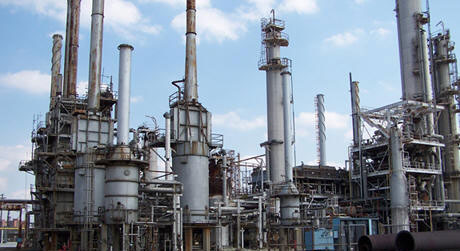When it comes to cooling towers, they are an open direct contact type of heat exchanger where warm water from a condenser or the system gets low temperature through direct contact with fresh air. In cooling towers, the concept of water evaporation against the airflow is used.
To get more surface for heat transfer, warm water is sprayed from the nozzles. After the direct contact with heat transfer between warm water and fresh air, humidity and temperature rise in the air.
The moist air is more petite in density. It flows upwards to the tower, and the cold water gets to the bottom. At the bottom of the building, there is a supply of fresh air to the difference in density between warm air in the stack and atmospheric air out of the tower.
Usually, people utilize cooling towers in oil refineries, natural gas plants, and other plants to take out heat from the water system.
Based on the kind of airflow in the cooling tower they are divided into two types-
- Natural draft cooling towers
- Mechanical draft cooling towers
Natural draft cooling tower
In the natural draft cooling tower, you will see that the airflow is obtained from its chimney structure. After the heat is transferred, the hot and moist air goes into the atmosphere as they are less dense, making it flow into denser air which is the fresh air.
The airflow happens due to the different densities of warm and cooler air inside and outside the tower. There is a pressure head made because of the different thicknesses of cold and hot atmosphere, giving the following formula:
∆Pd=ρo-ρigH
Here H is the height of the tower,
ρo is the density of air outside
ρi is the density of air inside
G is the gravity constant
The cooling tower height is always kept higher because the density difference is slight. This thing provides a sufficient flow of air. Such towers are made very large in stature and in criss cross-section. This allows a large amount of water to flow in the tower, increasing cooling efficiency.
Standard cooling towers are cylindrical in shape and made up of wood or are hyperbolic and made of concrete shells. Such concrete shell cooling towers are critical when transferring heat procedures.
The cooling towers having hyperbolic shapes provide higher structural strength and resistance to more ambient air.
Generally, natural cooling towers are suggested in:
- Humid and low temperatures climate
- Heavy winter loads

Principle of natural draft cooling tower
The warm water you wish to cool inside the cooling tower is pumped from the top of the building at an inlet of warm water. The bay of warm water is connected to a series of nozzles whose purpose is to spray the water on the fill material. It will give more surface area for the transfer of heat.
At the bottom of the tower, there is an open structure that provides fresh air. Then this air flows in the upper direction. This is for the heat transfer with direct contact with the fresh air. Some of the quantity of this water is evaporated, and the rest of the cold water is collected at the bottom of the tower.
Hot and moist air is given out from the upper part of the tower in the atmosphere.
Pros of natural draft cooling towers
- It saves a lot of power as it does not require fan installation.
- You won’t face any corrosion problems with this cooling tower.
- It requires pretty low maintenance.
- There is no recirculation of the air because of more stack outlets.
Cons of natural draft cooling tower
- A higher amount of water flow is required.
- These cooling towers require more area.
- This cooling tower’s performance depends on the velocity of the wind and its direction.
Bottom line
This was the complete information about how a natural draft cooling tower works. It is mainly based on the difference in density of the air. By this, you will understand adequately which kind of cooling tower you require.
With the help of the pros and cons of the natural draft cooling tower, you will be able to get a better idea about these towers and choose the right one that is needed for you.


